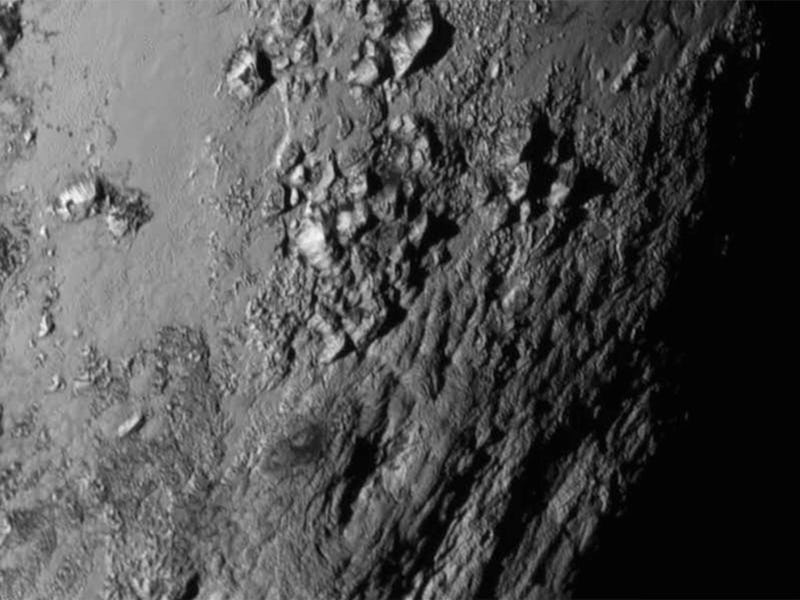NASA's New Horizons Mission Shows Us Pluto Is Incredible

NASA’s New Horizons mission to Pluto has returned so many datasets that principal investigator Alan Stern said he and his team are like doctors triaging patients in an emergency room. But instead of sick people, Stern and the gang have their hands full with great facts about the (former) ninth planet.
Long defined as merely cold, distant, and small, Pluto is now understood to be an incredibly dynamic world that can help us unravel the mysteries of the greater solar system. In a press conference hosted Tuesday by the American Astronomical Society, two speakers addressed the biggest things New Horizons has taught us about Pluto so far: what light reflections can tell us about how the planet stacks up to its neighbors, and to what extent can we confirm the possibility of clouds in its atmosphere.
Surface Reflections
In her presentation “Pluto’s Extreme Surface Reflectance Variations,” NASA Jet Propulsion Laboratory senior research scientist, Bonnie Buratti explained that some regions of Pluto were surprisingly found to reflect nearly 100 percent of the light falling onto them. Yet the planet still maintains dark equatorial regions that reflect less than 10 percent. The reflectivity indicates surface activity, and it allows scientists to distill a more accurate profile of the planet, and contextualize it in terms of other cold celestial bodies.
Pluto, it turns out, bears a notable resemblance to Iapetus, one of the moons orbiting Saturn — one half is very dark, and the other half very bright. Buratti and her colleagues also realized that there was another object within the Kuiper Belt that had some surface reflectivity of about 100 percent — the dwarf planet Eris. Because of the similarities, they can extrapolate that Eris likely exhibits some surface activity, too. These are all areas to focus on going forward.
“We’ve kind of moved from pretty pictures to the hard work,” Buratti said.
Clouds
Clouds aren’t unique to Earth; they’re common across the solar system, even over planets with significantly less atmosphere than our own. Pluto’s nitrogen-based atmosphere is much thinner than Earth’s, but not so thin as to preclude the possibility of cloud formation. Pluto’s atmosphere is developed in haze layers, which stretch more than half a million feet into the sky in large concentric patterns. But hazes don’t qualify as clouds — by definition they’re too diffuse, and too thin. If you were to look up at them vertically, from the surface, you might barely see them.
A series of New Horizons images scientists say are suggestive of possible, rare condensation clouds.
New Horizons data initially showed Pluto to be largely empty of clouds when it completed its flyby in July 2015, but since then, scientists have been able to use high-phase imagery to take a harder look. What they’ve put together is an inventory of what they’re calling ‘cloud features’ — seven promising formations that can’t be confirmed as clouds, but probably are.
In his presentation “Possible Clouds on Pluto,” Stern explained that these seven prospects lie too low to the surface to be confidently distinguished from the surface itself — to officially confirm, they’d need additional stereo equipment that they don’t have — but they are “quite suggestive” of cloud formation. These would be individually discrete clouds rather than cloud banks, as we often see them on Earth. All seven lie near what Stern calls ‘terminator areas’ — dawn or dusk. This strengthens their case for being clouds, since cooler places are more conducive to condensation.
All things considered, Stern believes that the New Horizons mission has compiled a “strong, but not airtight case” that some, or all of these seven objects, are in fact clouds. To say for sure, though, they’ll need to return for a longer mission with additional instruments.
Like the surface reflections, clouds on Pluto would point to the planet exhibiting a richer and more complex set of behaviors than anyone had guessed.